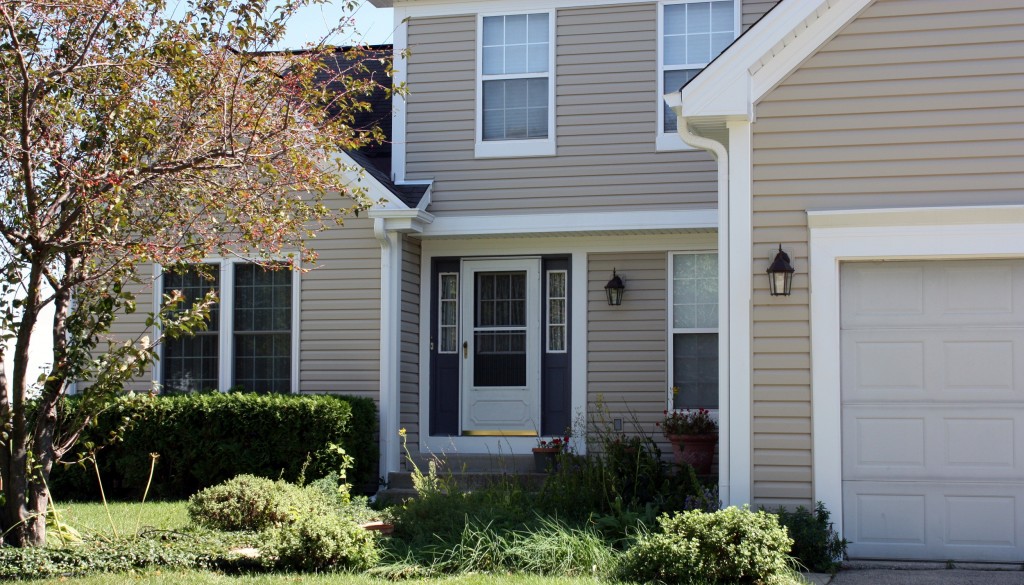What you need to know about re-siding your home
As you walk around your home, you’ve noticed your siding is starting to look too shabby to ignore. Before the neighbors start talking, you decide to call a few siding contractors and get estimates to re-side the home. Your goal is to get at least three bids, compare them, and choose the contractor who represents the best value for the money.
Here’s what you need to know.
Siding choices
On the market today, you have a few really good choices. At the entry level is vinyl siding. It comes in several attractive profiles and colors, and can last several years with little to no service. Vinyl siding comes in several thicknesses. Builder’s grade is between .038 and .042. This is a price-point siding designed to get a builder through their usual 1 year warranty period. Besides the thin gauge of the vinyl, manufacturers also cut back on the additives that prolong the lifespan of the siding and keep the fade to a minimum. Up from there is .044 and .046. These are better grades of siding, and should be all you consider. The .046 is usually a manufacturer’s flagship vinyl, and has the best rigidity, fade resistance, and durability. We use only Royal or Exterior Portfolio premium vinyl siding.
Next up is Fiber Cement. As the name implies, fiber cement siding is primarily portland cement with cellulose fibers added for strength and flexibility. Fiber cement comes primed or factory finished. This siding mimics the look of wood, and usually has trim that replicates how a craftsman or farmhouse style home from the past was built. One type of siding in this category stands far above the rest. It’s James Hardie Fiber Cement Siding. Hardie has some significant differences from the competition. Hardie has been on the market since 1950, and is the #1 siding choice in America today. Their Hardiezone technology formulates the product differently depending on the climate zone it will be installed. It also has a factory finish called ColorPlus, which resists fade better than any other fiber cement paint system.
Third, is a composite siding you may not have heard of before. Cellular PVC is a composite similar to decking products. It is made from a vinyl-like product, expanded for rigidity and better appearance. It is naturally impervious to water, so the look is nicer than fiber cement. It doesn’t require the type of specialized installation which fiber cement does to help it stay dry. Celect Cellular PVC Siding is a great product, with a Kynar finish for the kind of durability architects demand on skyscrapers, and is an additive used in the paint of the world’s foremost automotive brands.
What’s right for MY home?
If you’re talking to a great contractor like Hollingsworth Home Improvement, your project coordinator will ask you about your plans for the future. It’s smart to keep the type of the materials you choose at least as good as your neighbors’ homes. At the same time, market trends are heading towards composites and away from vinyl the same way aluminum gave way to vinyl in the 1980’s. By the time you sell your home, your neighbors may have gone with this trend, and installed better siding. You’d hate to be the one with the outdated house when it’s time to sell. Also, if you expect to stay a long time in the home, the extra expense of getting the home to look the way you want it pays long dividends of satisfaction.
Beauty is more than skin deep.
It’s easy to get all caught up in the process of determining budget and final design or colors and miss a really important topic, the plan. Residing your home has more than just a cosmetic facet, it’s the first line of defense against the elements that protects your biggest investment. You need a good idea if your contractor has the training, expertise, and crew to install the products correctly. It’s the little things that make all the difference here. Are the flashings done correctly? Is the housewrap done well? How about the manufacturer’s requirements. Have they been met to ensure you have a warranty? How about the workmanship warranty, and whether or not the contractor will be there to enforce it? All of these things and many more determine the value you’re presented and receiving for the money. Many times, value is realized down the road, and not when you pay the final invoice.
Recent Posts
Ice Dams: What did I do to deserve this?!?!?!
If you live in the Great Lakes region of the country, I’m sure you’ve experienced this. Heavy snow falls when the temps are nearest to freezing. It thaws again when the temps are above 32 degrees, or the sun starts shining again. In a cycle of freeze and thaw, often...
A primer on windows. What should you buy, and how much of a difference will it make?
The most common questions we get asked here at Hollingsworth Home Improvement regarding new windows are, “What kind of windows should I buy?” and “How much of a difference will new windows make for my home?” The answer to those questions are best answered by a...
Attic Ventilation: What you need to know, and what your contractor should too!
Roof ventilation is one of the most important aspects to consider in any roofing or siding project. Poor ventilation can cause your shingles to deteriorate faster, lowering the value of your home and the investment you make when hiring a remodeling contractor. Humid...



